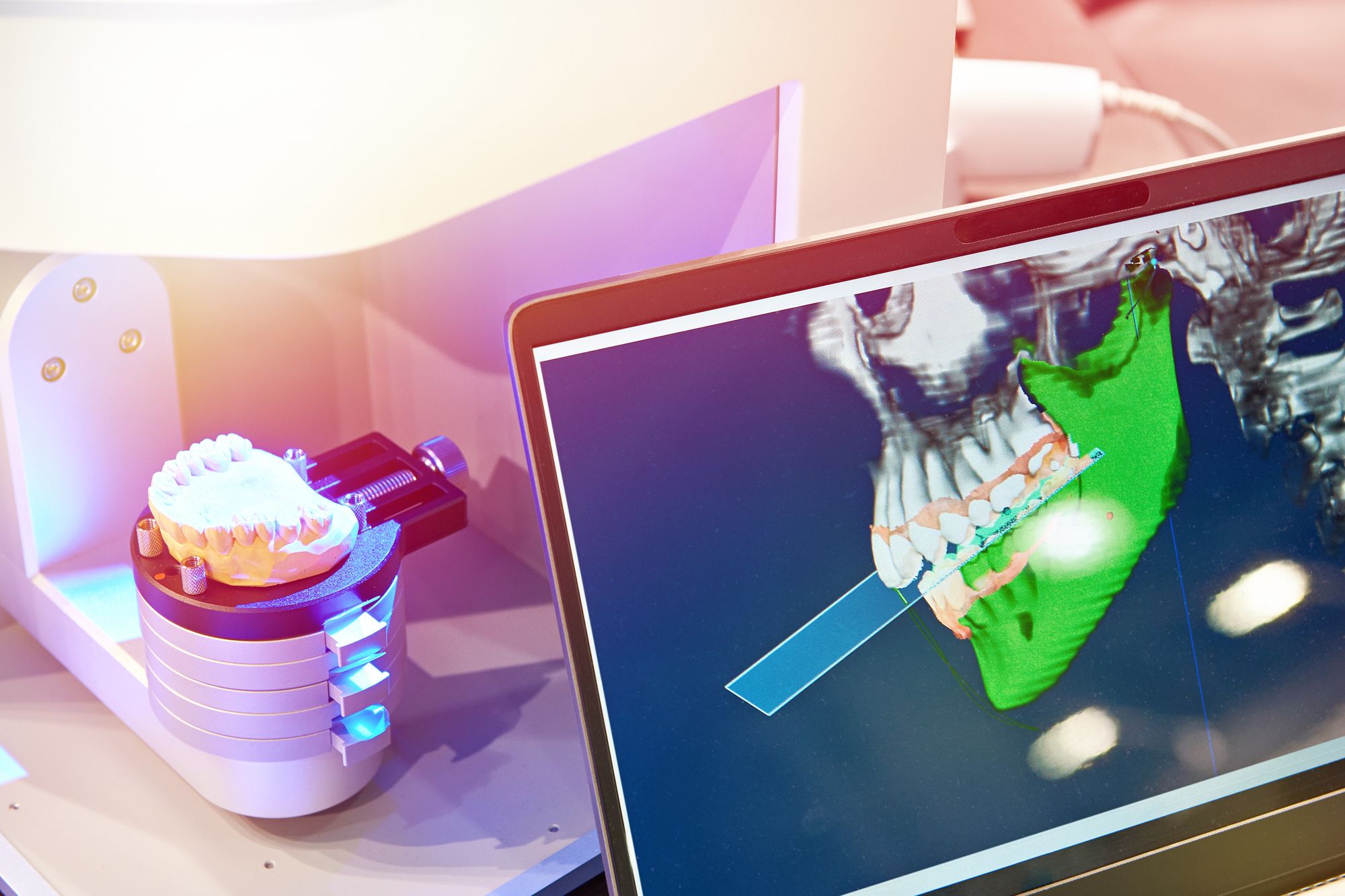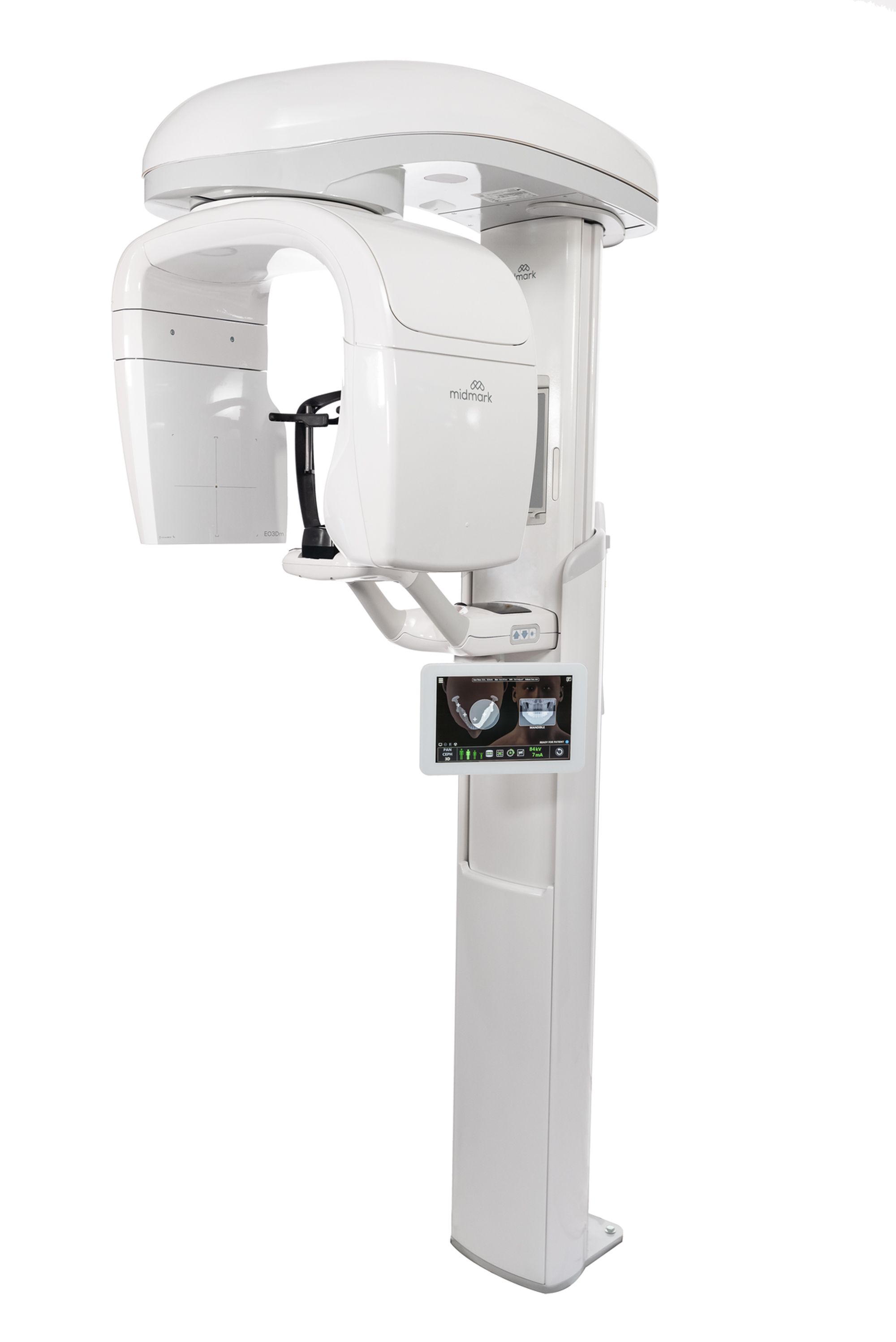How Digital Do I Need to Be for the Dental Practice?
For many practices, a digital workflow is inevitable. But how do you prioritize, implement, and benefit from a digital technology investment?
How Digital Do I Need to Be for the Dental Practice? Photo courtesy of Sergey Ryzhov/stock.adobe.com.

Dental technology has transformed many practice's workflows from analog to digital. However, not every practice has a digital workflow. Those considering the transition may wonder how digital do I need to be?
The answer is very—and not only in the practice workflow.
Anna Singh, DMD, Senior Vice President of Clinical Operations, Heartland Dental, says today and in the years to come, technology is the single most important factor that will influence patient care and patient acquisition as well as products and services offered in a dental practice. Technology has a massive effect on how dentists market—search engine optimization and social media platforms allow dentists and their teams to analyze both patient behaviors and market trends, ultimately allowing them to be more thoughtful in the way they engage with patients.
Technology influences patient interactions, too. For example, some dental practices utilize call centers and chatbots or use app-based services to create better patient experiences. Dr Singh says many of these technologies use artificial intelligence (AI) to understand the patient's experience, to create efficiency and accuracy in diagnosis. AI technology will be used to mark existing conditions, anatomical landmarks and quantify the disease process hence creative opportunities for predictive analytics which in turn can enhance preventative care and a proactive approach to treat dental disease.
Dr Singh shares that the ubiquity of technological innovation and the relentless pace of change require clinicians to choose the platform that brings these technologies together. However, while many vendors offer similar technology products, they are not the same.
"It is challenging for clinicians to find the right technology for both their practice’s and patients' needs," Dr Singh explains.
Where Should a Practice Start?
Dental practices might also question where to start. Is it shifting to 3D imaging, incorporating a scanner, or adding CAD/CAM workflows? Choosing the starting point can be overwhelming to some practices.
Many practices also experience stress related to buying too much technology. Lisa Thompson, CDA, RDA, Midmark® Clinical Service Manager, says to start with a purchase that helps you diagnose and treat patients confidently. However, recent research by Midmark discovered that 39% of dentists using advanced technology are overwhelmed by it. Therefore, considering the application and implementation of that purchase is also essential.
"Practice stakeholders need to think about who will be operating the tools and how easy it will be for them to adapt that technology into their daily routines," Thompson says.
Midmark's new EOIS digital imaging system.

Dr Singh agrees that dental practices should prioritize technology acquisitions that fit patients' needs and solve the practice's challenges, something not every new, shiny technology offers. However, when it comes to prioritizing, Dr Singh likes to be at the cutting edge, not the bleeding edge. The following questions determine the difference:
- Is there room for efficiency in the area the technology addresses?
- Are there opportunities for high-quality outcomes?
- Does the technology provide consistency of care?
- Is the technology reliable and well-supported by the manufacturer?
- What is the science behind the technology, and is it repeatable in practice?
"These are some baseline thoughts I would pose for any practice considering new technology," Dr Singh says.
The practice's environment is another critical consideration. Dental practices with solid team leadership and the agility to adapt to changes in workflows and processes are on one end of the spectrum. On the other end are teams that struggle with change. When Dr Singh considers digital integration for Heartland Dental, she looks for technology with potential for practices in the middle of these extremes.
As a doctor-led dental service organization (DSO), Dr Singh explains the partnership with supported doctors and their teams in making these decisions is essential. Noting, when the team is involved in the decision-making process, the implementation is more straightforward because you already have the team's buy-in.
"Do not underestimate the amount of change that technology will bring or fail to consider how well it will assimilate with the existing process and systems," Dr Singh advises. "We can get so excited about the potential benefits to the patient experience that we forget about the teams and whether it makes their lives any better."
How Trained Should the Team Be?
Thompson thinks everyone should train on new equipment. Without training, people do not get comfortable, leading to technology investments sitting around collecting dust. Moreover, cross-training, and continuous training are essential in today's “Great Resignation” environment to keep the office running.
"The doctors should work with consultants and team leads to establish peer-to-peer learning environments, which allows for training to continue after you get an onboarding session with a new piece of technology," Thompson explains.
Thompson also advises investing in onsite training with licensed clinical educators. Onsite training professionals can help with the specific workflow issues for the practice, mitigating the potential for sidelining new equipment because of integration issues or logistical concerns. For example, Midmark's clinical training program has a curriculum that trains assistants and hygienists in the morning, and the doctor over lunch. The afternoon is dedicated to training support for the practice’s clinicians while they use the technology with patients.
Thompson also advises knowing where the support center is.
"No one wants to get on the phone and discover support is in a different time zone on a different continent. Then, you're waiting a day or 2 for support," Thompson says.
Dr Singh agrees everyone should train, adding that a step-by-step way to use new technology in daily practice is an essential component. Patients are also a critical stakeholder, and the team should align on communicating the benefits to patients in a concise, non-technical manner to secure their buy-in. In addition, choose the type of training—in-person, online, self-paced, or web-based—that will work best.
"Different types of training might work for different people depending upon how quickly you want to scale," Dr Singh says. "Also, think about engaging champions, the early adopters, for that technology in the practice. Those champions will help others as people work through their stages of change."
Large practices with multiple locations might also need the flexibility to modify the manufacturer's training. Heartland Dental sometimes does a pilot program with a few practices before a larger rollout, allowing them to overcome internal friction points faster and adapt the script into Heartland Dental language. These modifications make it easier for the teams to integrate into their existing systems.
Gamifying the integration effort can help, too. For example, Dr Singh says they had a scan-time competition for the company-wide rollout a few years ago to help the clinical teams get comfortable and efficient with the sensors. The competition started at the regional level. The final round had the top 5 fastest clinicians across the nation scan a patient live at the annual company-wide event. The winning scan was under 2 minutes.
"You have to build excitement with training," Dr Singh says. "If you just do an ordinary training, it's hard for people to get excited about the change and buy in to the future potential.”
However, practices should never forget with new purchases of technology and software that the interruption to business-as-usual and the related learning curve is stressful for team members. Anything the practice stakeholder can do to mitigate that is essential.
"Keep the team stress-free and happy," Thompson says.
How Will This Investment Provide a Return to my Practice?
Thompson believes 3D CBCT should start the digital workflow. Midmark's Extraoral Imaging System recently released, and Thompson says 3D CBCT is a valuable tool in overall patient care by providing that additional information for routine care. Moreover, a DICOM file is a medical-grade file, making CBCT a universal tool in healthcare right now.
Moreover, the CBCT provides a better visual of conditions the clinical team wants to diagnose and treat early. She explains that it's less painful and expensive when patients get treatment earlier.
"When we take a 3D scan, we find many things that we never saw in a 2D image," Thompson says.
One of the most significant returns on investment is staying relevant, Dr Singh confirms. Also, using technology to make process improvements should improve chair-time efficiency and facilitate high-quality patient care experiences.
"All of this creates cost savings," Dr Singh explains. "On the front end, you have to invest a little bit. But if you pick the right technology and equipment, it will pay for itself in the long run."
However, the investment can also affect overhead costs, productivity, and patient acceptance rates. For example, the intraoral scanner integration by Heartland Dental made a significant difference in the remake rate for restorations. Before scanning, their remake rate was four percent; after the scanner integration, it dropped to 2.1%. Moreover, hygiene became more productive because the scanners helped connect visually for the patients the disease process and abnormalities and enhanced the communication of occlusal disease and periodontal disease for patients.
"Our overall case acceptance dramatically changed by offering scanners and technology to our supported practices," Dr Singh says.
Thompson agrees that when patients feel comfortable, they accept the dentistry the practice recommends. Patient acceptance is beneficial for patients and dental practices. The primary return on investment is the patient's perception that the dental practice is doing everything possible to keep the patient healthy, something patients like to talk about with friends and family.
"And we all know that word-of-mouth marketing is the best marketing," Thompson says. "I correlate this to, 'Happy patient, happy life.'"